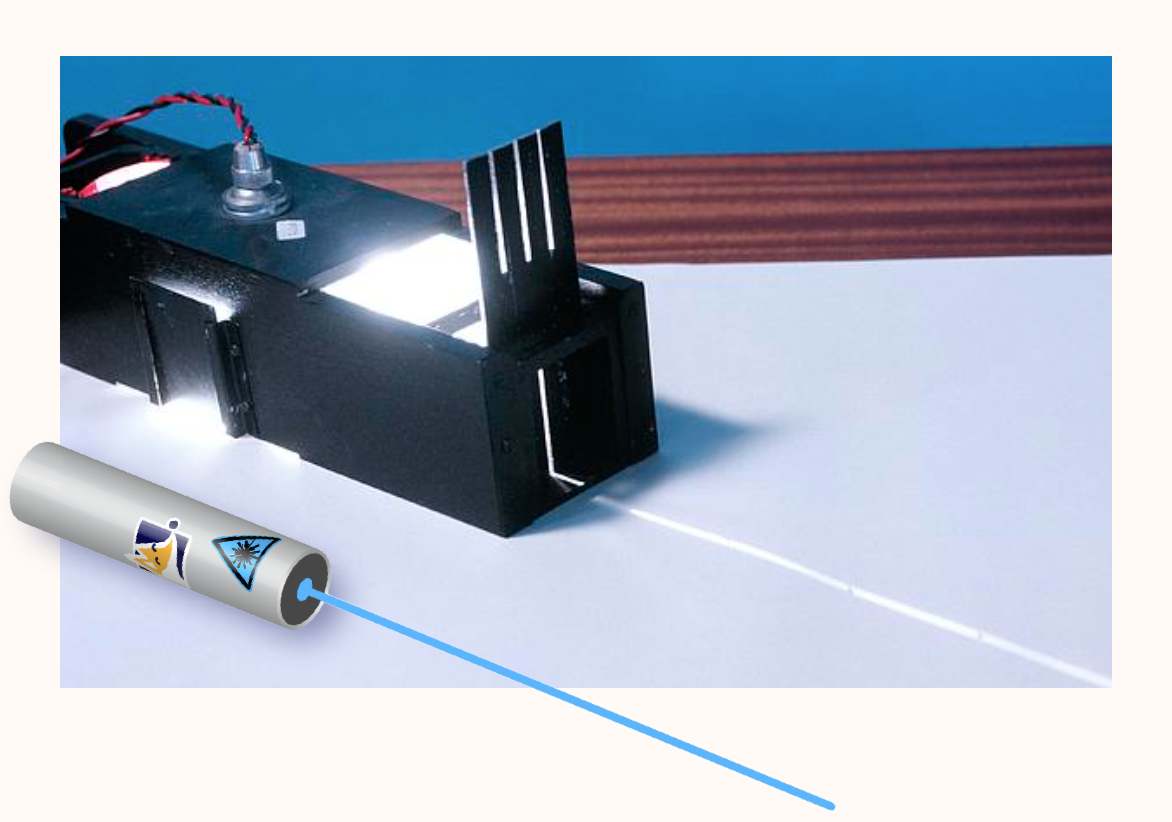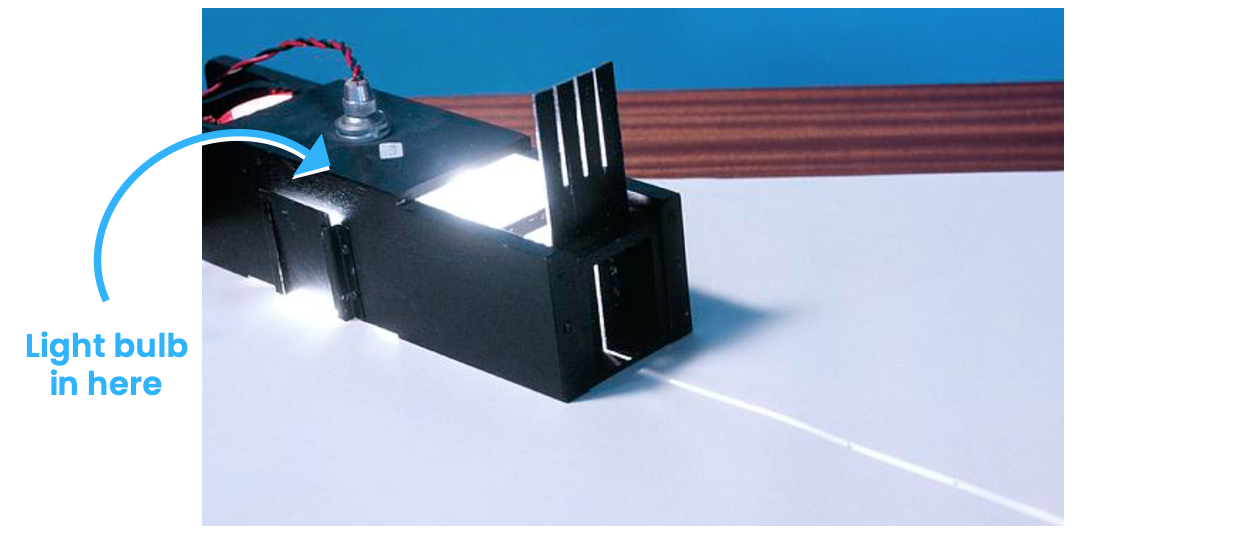Physics
Fox
Summary
- Light always moves through space in a straight line. This is easiest to see with a ray box or a laser.
- Light is the fastest thing in the universe when moving through empty space (aka. a vacuum).

I'm travelling at the speed of light
I wanna make a supersonic woman of you
How does light move through space? Can it travel whatever path it feels like?

Not quite — in fact there's a law that describes this:

If light didn't move in a straight line, you'd be able to see round corners!
Most luminous objects emit light in all directions, but this is still only in straight lines. We can check this by blocking almost all the light from bulb, apart from a small slit. This contraption is called a ray box.



Shadows are also an example of light moving in a straight line. A shadow is simply a region where light doesn't reach (because something's in the way). If you trace the line between a light source, the edge of an object, and the edge of its shadow, you will always get a straight line.

Anything that travels must have a speed. A car might travel at 60 miles per hour, or a plane might fly at 600 miles per hour.

A rocket can travel at 6000 miles per hour.

The Earth moves round the sun at 67,000 miles per hour.

This seems very fast, but it pales in comparison to the speed of light. Light travels at 670,000,000 miles per hour (= 300,000,000 m/s).

This is outrageously fast. In fact, it's so fast that nothing else can keep up — light is the fastest thing in the universe.
Here's something to put that speed into perspective: It takes light just 1 second to reach the moon from Earth, whereas it would take a jumbo jet over 15 days (if planes could fly through space). That's over a million times longer!
Technically, light only moves at this speed when travelling through empty space (also known as a vacuum). Light travels slower (although still incredibly quickly) when moving though materials, such as glass and water.
Congratulations!
5 of 5 questions completed
+ ⭐️ collected.
Sign up (for free!) to:
• save your progress 📊
• create constellations✨
• customise your fox! 🦊







